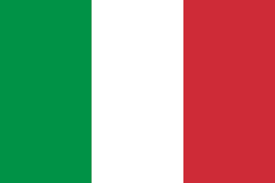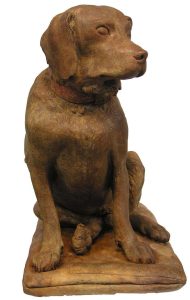Fantastical creatures and natural animals, those that roam distant lands and those that live with us here: for those paying attention, Bologna offers a variety of animals, both large and small, inviting everyone to admire them (even though they’re made of stone, bronze, and terracotta!).
The dolphins of Neptune
The first example of animals represented in the city is found in one of Bologna’s most famous symbols: Neptune. The “Zigànt” (a Bolognese nickname for the statue, meaning “Giant”) can be found in the square that bears his name and is accompanied by sirens and cherubs, four of each to represent the main waterways of the continents known at that time: the Ganges, Nile, Amazon, and Danube rivers. Each cherub holds a dolphin, and the four sirens (or nereids) each sit astride their own marine animal.
These are the first of our fantastic Bologna animals… and what animals they are!
I Marzocchini
As you approach the front of the Basilica of San Francesco, you can see a series of bronze lions along the fence that circles behind the apse of the Basilica.
They were made in 1912 by Alfonso Rubbiani, and they bare the unusual name “Marzocchini”. The reason behind the name is that Rubbiani actually took his inspiration from yet another lion: the famous Marzocco of Florence, sculpted by Donatello.
The elephants of Palazzo Fantuzzi
Does Bologna really have its own elephants? Yes! Just head down Via San Vitale to Palazzo Fantuzzi. The façade was started in 1521 at the behest of Francesco Fantuzzi and carried out by Formigine, though it has also been attributed to Peruzzi or possibly Serlio. Here we find the image of an elephant supporting a fortress, carved into the niches of the upper floor in reference to the Fantuzzi family coat of arms.
Tago the Dog
This dog’s story was “born” in Via Oberdan and then moved to the Archaeological Civic Museum in the form of a terracotta statue. Tago, the star of a legend that has been handed down through the generations, is said to have belonged to the owner of Palazzo Bersani, the Marquis Tommaso de’ Buoi. The two were very fond of each other and the animal missed his owner terribly whenever they were separated. So much so that one day, upon seeing the Marquis returning home, Tago became impatient and jumped from a window in an eager, but fatal, attempt to greet his master.
Tommaso de’ Buoi had a statue made in memory of Tago, represented as if he were looking towards the horizon for his master. The terracotta statue is now in the Archaeological Civic Museum.
The rooster of Saint Peter
What’s a rooster doing in Santo Stefano? It may sound strange, but if you visit the complex of the Seven Churches, you will find a stone rooster dating back to the 14th century. It is located under the portico in the courtyard of Pilato (Pontius Pilate), so called in remembrance of the passion of Christ. The animal stands at the top of a column in the middle of a window. It is called the “Rooster of Saint Peter” to remind us of Peter’s denial of Jesus.
The falcons of San Petronio
Here we transition from stone and bronze to living specimens of flesh and bone. To see the living animals, you will have to visit the Basilica of San Petronio. This is where a pair of peregrine falcons decided to nest in 2007. A somewhat special “home” for these birds, who chose to settle on one of the windowsills of the San Petronio bell tower 15 years ago so they could gaze down upon the city from atop one of Bologna’s most famous monuments.
Have you seen any other animal statues in Bologna?
Let us know at ufficio.stampa@succedesoloabologna.it
Discover Bologna with us









